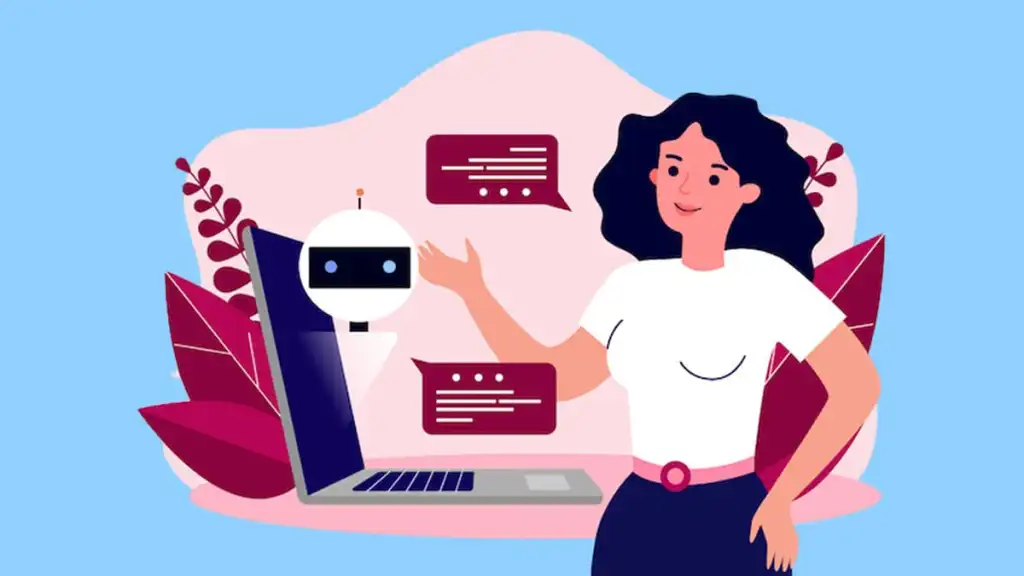The Rise of Software Technology
Early Beginnings: The Birth of Software
Software technology began in the 1940s and 1950s with the invention of the first programmable digital computers. These early systems were used mainly for military and scientific calculations. At this stage, software development was rudimentary, as programs were written in machine code, a complex and tedious process. The idea of programming was to give instructions to machines, making them perform tasks that could otherwise be carried out manually.
In the 1960s and 1970s, the development of higher-level programming languages like COBOL, FORTRAN, and Lisp laid the foundation for more user-friendly programming. This era also saw the introduction of operating systems like UNIX, which would later become the backbone of many modern systems, including Linux.
The Advent of Personal Computing
The real breakthrough in software technology came with the arrival of personal computers (PCs) in the late 1970s and early 1980s. The personal computing revolution brought computers into homes and small businesses, making software an integral part of daily life. The most notable software product of this era was Microsoft’s Windows operating system, which provided a graphical user interface (GUI) that was much more accessible than the command-line interfaces that preceded it.
This era also saw the rise of word processors, spreadsheets, and desktop publishing software, making office work more efficient and accessible. As personal computers became more affordable and widespread, software technology advanced quickly, leading to the development of complex software systems for various industries.
The Internet and the Dot-com Boom
In the 1990s, the internet fundamentally changed the landscape of software technology. The World Wide Web became widely accessible, and software companies began developing applications to facilitate communication, business, and entertainment online. The rise of web browsers like Netscape Navigator and Internet Explorer, along with the development of e-commerce platforms, social media, and online communication tools, further entrenched software in everyday life.
The dot-com boom of the late 1990s and early 2000s saw the rapid growth of internet-based companies, many of which would go on to become tech giants, such as Google, Amazon, and Facebook. The explosion of online services paved the way for new types of software technologies, such as cloud computing, which would transform the way software was delivered and used.
Modern Software Technology
Today, software technology is more sophisticated than ever before. The industry has seen the rise of several new trends and innovations that have reshaped the way software is developed, distributed, and consumed. Let’s take a look at some of the key areas of modern software technology.
Cloud Computing
Cloud computing is arguably the most significant innovation in software technology in the last decade. The concept of cloud computing involves delivering software and services over the internet, allowing users to access applications, storage, and computing power remotely. This eliminates the need for local hardware infrastructure, enabling businesses to scale more efficiently and reducing costs.
Cloud-based software-as-a-service (SaaS) applications, such as Google Workspace, Microsoft 365, and Salesforce, have become standard tools for businesses worldwide. Additionally, cloud computing has made it possible to run complex applications and services without the need for expensive on-premise servers, democratizing access to powerful computing resources.
For developers, cloud platforms like Amazon Web Services (AWS), Microsoft Azure, and Google Cloud Platform (GCP) provide infrastructure, platforms, and tools to build, test, and deploy applications quickly and cost-effectively.
Artificial Intelligence and Machine Learning
Artificial intelligence (AI) and machine learning (ML) have made significant strides in recent years, thanks to advancements in computational power, data availability, and algorithm development. Software systems powered by AI and ML can analyze massive amounts of data, recognize patterns, and make predictions or decisions with minimal human intervention.
In everyday life, AI is embedded in software applications like virtual assistants (e.g., Siri, Alexa), recommendation systems (e.g., Netflix, Amazon), and autonomous vehicles. In business, AI and ML are used for data analysis, customer service (via chatbots), fraud detection, predictive analytics, and much more.
The future of AI and ML in software technology is incredibly promising. We are seeing software systems becoming increasingly intelligent, with capabilities that were once considered science fiction now becoming reality. As AI continues to improve, it will likely play an even more significant role in automating tasks, enhancing decision-making, and driving innovation.
Blockchain Technology
Blockchain is another breakthrough in software technology that has gained significant attention in recent years. Originally created as the underlying technology for Bitcoin and other cryptocurrencies, blockchain has applications that go far beyond digital currency.
Blockchain is a decentralized and distributed ledger that allows for secure, transparent, and tamper-proof transactions. In addition to cryptocurrency, blockchain technology has been applied to industries such as finance (for secure payments and smart contracts), supply chain management (for tracking goods and verifying authenticity), healthcare (for secure patient data sharing), and more.
Blockchain’s potential to disrupt various industries is enormous, and its role in shaping the future of software technology is just beginning to unfold.
DevOps and Agile Development
In software development, two methodologies have emerged in recent years as the dominant ways of building and deploying software: DevOps and Agile. Both methodologies prioritize collaboration, flexibility, and speed in the software development process.
DevOps is a set of practices that combine software development (Dev) and IT operations (Ops) to shorten the software development lifecycle and improve the quality of software. By automating manual processes and fostering collaboration between developers and IT teams, DevOps enables faster, more reliable software releases.
Agile development, on the other hand, is a set of principles and practices that prioritize iterative development, customer feedback, and collaboration. The Agile methodology breaks down the software development process into smaller, manageable chunks called sprints, allowing teams to deliver incremental updates to software over time.
Together, DevOps and Agile have transformed how software is developed, making the process more efficient, transparent, and adaptable to changing requirements.
Edge Computing
Edge computing is a relatively new trend in software technology that brings computation and data storage closer to the location where it is needed. This is especially important for applications that require real-time processing, such as autonomous vehicles, IoT devices, and industrial automation.
By processing data at the edge (i.e., on devices or local servers rather than in distant cloud data centers), edge computing reduces latency, increases speed, and decreases reliance on internet connectivity. This technology is expected to play a critical role in the future of software, especially as the number of connected devices and the amount of data they generate continue to grow.
The Future of Software Technology
As software technology continues to evolve, several exciting trends and innovations are on the horizon. Let’s explore what the future holds for software and its impact on our lives.
Quantum Computing
Quantum computing is a next-generation technology that promises to revolutionize the way we process information. Unlike traditional computers that use binary code (0s and 1s), quantum computers use quantum bits (qubits) that can exist in multiple states simultaneously. This allows quantum computers to solve certain types of problems much faster than classical computers.
While quantum computing is still in its infancy, researchers and companies are actively exploring its potential applications, such as cryptography, drug discovery, financial modeling, and optimization problems. As quantum technology matures, it could lead to breakthroughs in software development and problem-solving.
The Internet of Things (IoT)
The Internet of Things (IoT) refers to the network of interconnected devices that can collect and exchange data. From smart thermostats and wearables to industrial sensors and connected vehicles, IoT is transforming the way we live and work.
Software technology plays a crucial role in IoT, enabling devices to communicate with each other, analyze data, and perform actions autonomously. In the future, IoT will continue to grow, and software will become even more integral to its success, with advanced analytics, AI, and edge computing being used to process and act on IoT data in real-time.
Augmented Reality (AR) and Virtual Reality (VR)
Augmented reality (AR) and virtual reality (VR) are immersive technologies that are rapidly gaining traction in industries such as gaming, healthcare, education, and retail. Software is the driving force behind these technologies, enabling the creation of realistic virtual environments and interactive experiences.
In the future, AR and VR will become more sophisticated, with software innovations enabling more immersive, realistic, and practical applications. For example, AR could be used for real-time navigation, while VR could enable virtual meetings and remote collaboration, changing the way we interact with both the digital and physical worlds.
Autonomous Systems
Autonomous systems, such as self-driving cars, drones, and robots, rely heavily on software technology to navigate, make decisions, and perform tasks. These systems are powered by AI, machine learning, and advanced sensors, enabling them to operate without human intervention.
The development of autonomous systems is still in progress, but the future looks bright. As software technology advances, we can expect to see even more autonomous applications, from delivery drones to automated factories, reshaping entire industries.
Conclusion
Software technology has come a long way since its inception, and it continues to evolve at a rapid pace. From the early days of simple programming to the complex, interconnected systems of today, software has revolutionized the way we live, work, and communicate.
As we look to the future, innovations like cloud computing, AI, blockchain, quantum computing, and IoT will continue to drive software technology forward, creating new opportunities and challenges across all sectors. The future of software is not just about making things more efficient; it’s about enabling entirely new ways of interacting with the world and solving problems.
For businesses and developers, staying ahead of these trends is essential. By embracing new software technologies and continuously adapting to change, we can continue to innovate and build a more connected, intelligent, and dynamic world.



